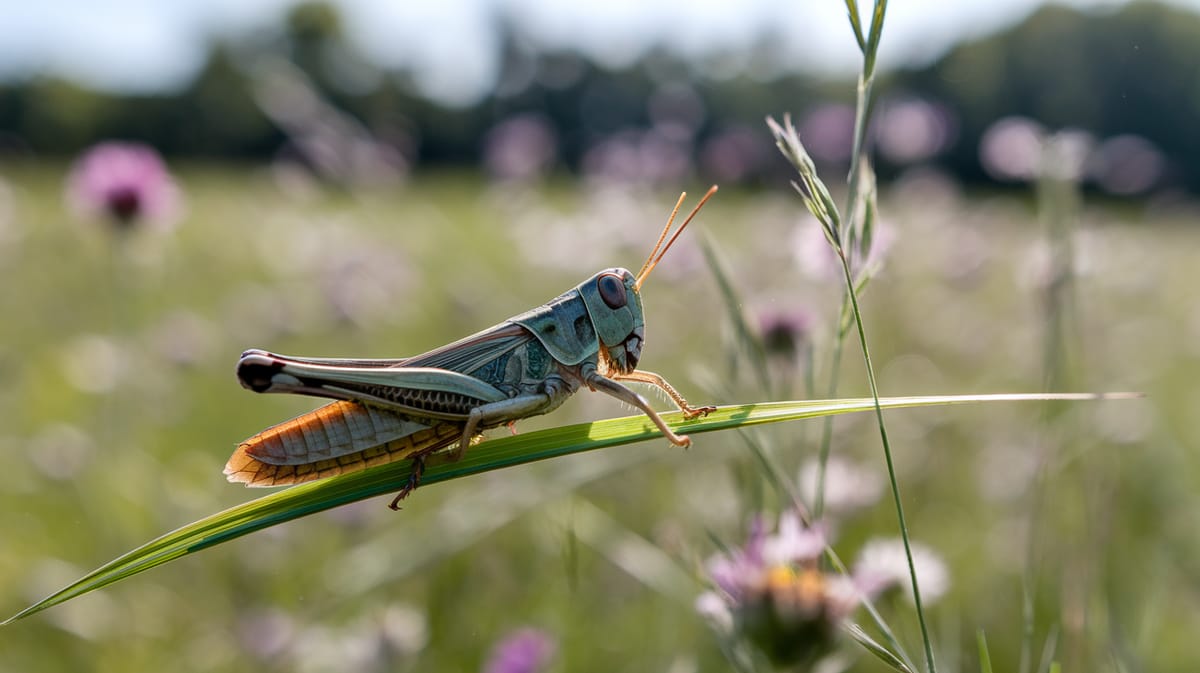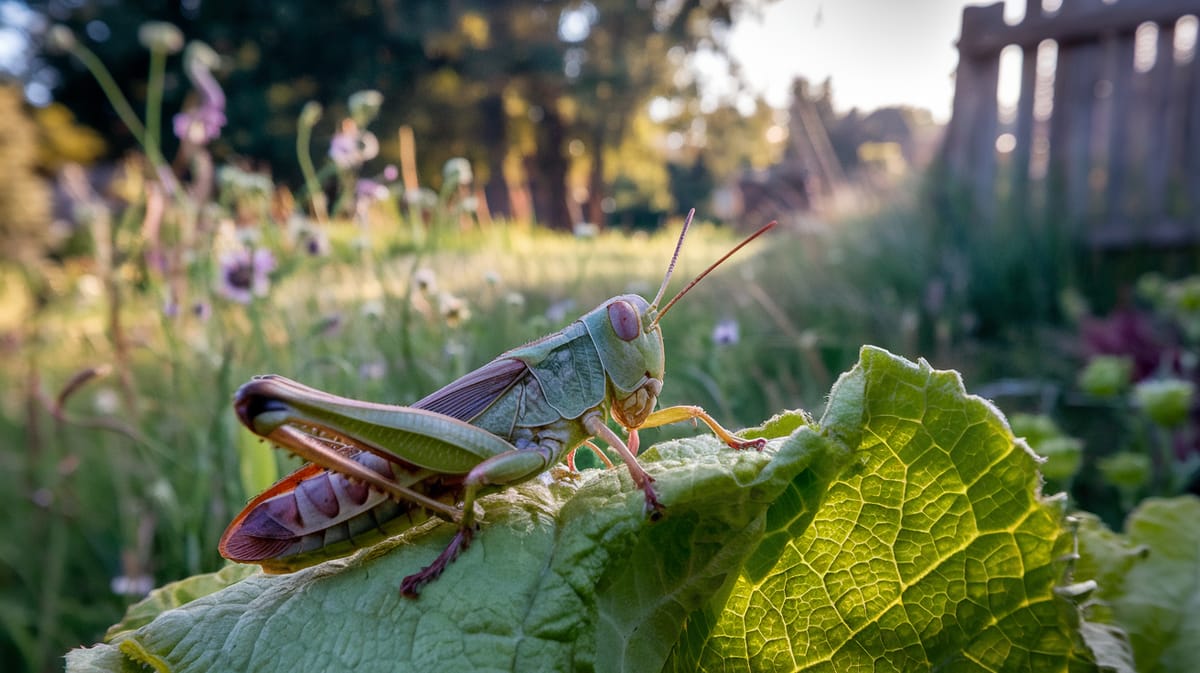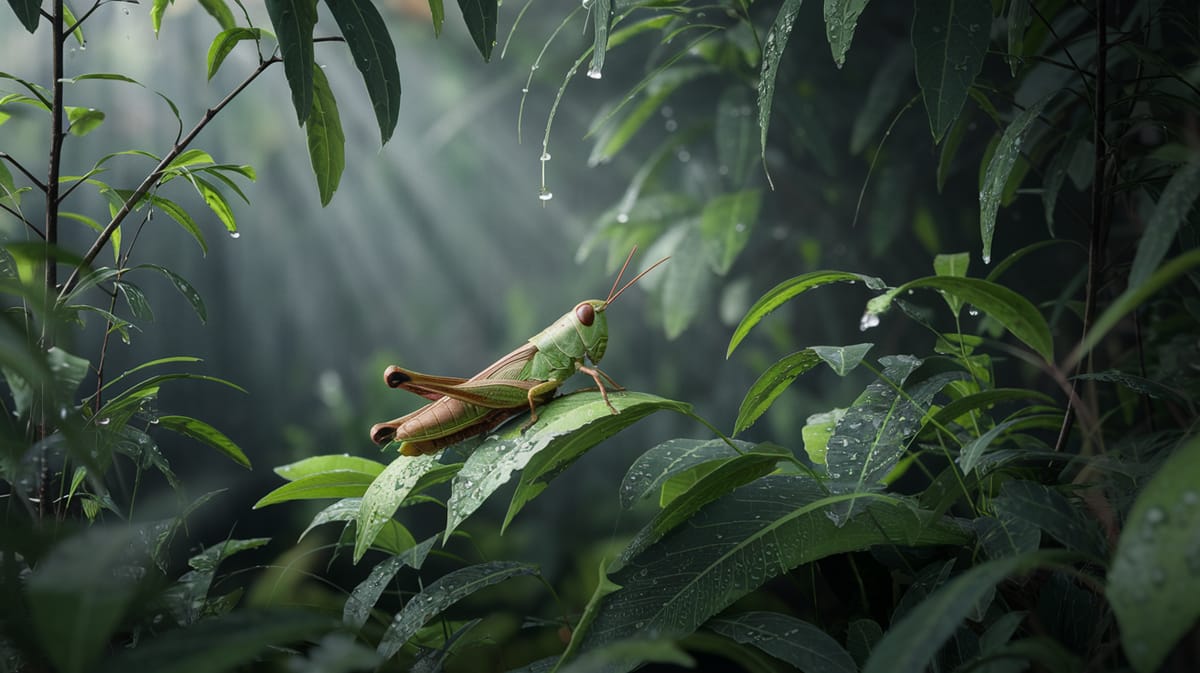Grasshopper
A master of leaps, the grasshopper relies on its powerful legs for swift escapes and graceful landings. Its role as a herbivore helps maintain the ecosystem balance.

Key Insights at a Glance
Did You Know?
Taxonomy & Classification
Grasshoppers, with their powerful hind legs and unique auditory organs, play a crucial role in grassland ecosystems. Let's understand the evolutionary journey and classification of these remarkable herbivores.
Species Diversity
Grasshoppers encompass over 11,000 species, primarily within the Acrididae family, thriving in diverse habitats worldwide.
Ancient Origins
Originating over 250 million years ago, grasshoppers evolved during the Triassic period, enduring through significant climatic and geological changes.
Lifecycle and Growth
A remarkable journey of transformation from Egg to Adult.
Egg
Laid in soil, the eggs undergo embryonic development, relying on moisture and temperature for successful hatching.
Nymph
Resembling small adults, nymphs undergo several molts, gradually forming wings and maturing their internal systems.
Adult
Full-grown with developed wings, adults are capable of long-distance movement and engage in reproduction to sustain their population.
Dietary Habits
A voracious herbivore with keen chewing abilities, this insect primarily feeds on various grasses and leafy vegetation.
| DIET TYPE | DESCRIPTION |
|---|---|
| Primary Diet | Mainly consumes grasses, leaves, and cereal crops, using strong mandibles for efficient chewing and digestion. |
| Secondary Diet | Occasionally feeds on fruits and flowers, supplementing its diet with more diverse plant sources when available. |
| Occasional | Rarely consumes bark or seeds, resorting to these less nutritious options in times of scarcity or environmental stress. |

Behaviour and Adaptations
Discover the fascinating adaptations that make the Grasshopper a master of survival in its environment.
Jumping Prowess
Powerful hind legs allow grasshoppers to leap great distances to escape predators.
Camouflage Coloring
Natural coloration helps grasshoppers blend into their surroundings, avoiding detection.
Stridulation Communication
Grasshoppers produce sound by rubbing their legs against wings to communicate.
Ecosystem Impact
Grasshoppers play a crucial role in maintaining ecological balance through their interactions within ecosystems.
Nutrient Recycler
Grasshoppers aid in decomposing plant matter, enriching soil quality.
Food Chain Connector
Serve as a key food source for birds, reptiles, and mammals.
Vegetation Control
Help regulate plant growth by consuming excess vegetation.
Conservation Challenges
Understanding and addressing the major threats to Grasshopper populations.
Habitat Loss
Urban and agricultural expansion reduce grasshopper habitats significantly.
Pesticide Use
Chemical exposure from pesticides severely harms grasshopper populations.
Climate Change
Altered weather patterns disrupt grasshopper breeding and survival.
Frequently Asked Questions
How long do Grasshopper live?
Grasshoppers typically live for several months, usually around 12 months. Their lifespan involves stages of egg, nymph, and adult. Environmental factors and predation can influence their life expectancy.
What do Grasshopper eat?
Grasshoppers primarily feed on grasses and leaves. They are herbivores and can consume crops and other vegetation, sometimes causing significant agricultural damage.
Are Grasshopper poisonous?
Grasshoppers are not poisonous to humans. They are generally harmless, though some species can secrete defensive chemicals that may deter predators.
Are Grasshopper endangered?
Most grasshopper species are not endangered, although habitat loss and pesticide use can threaten certain populations. Conservation status can vary depending on the region and species.
What do Grasshopper symbolize?
Grasshoppers often symbolize good luck, abundance, and freedom in various cultures. They are also seen as a symbol of adaptability and resourcefulness.
Do Grasshopper bite?
Grasshoppers can bite, but they rarely do so unless handled. Their bites are not harmful to humans and typically result in minor irritation.
What color are Grasshopper?
Grasshoppers are typically green, brown, or tan, which helps them blend into their surroundings. Some species may exhibit more vibrant colors like red or yellow, especially during mating displays.
Does a Grasshopper have wings?
Yes, adult grasshoppers have wings. They typically have two pairs of wings, with the front pair being narrow and the hind pair being broad and used for flying.
What does a Grasshopper look like?
Grasshoppers have long hind legs for jumping, a hard exoskeleton, and two pairs of wings. They usually have a cylindrical body, large eyes, and short antennae.
Is a Grasshopper an insect?
Yes, a grasshopper is an insect. It belongs to the order Orthoptera and is characterized by its jumping ability, six legs, and segmented body.
Related Insects
Discover insects with similar characteristics to Grasshopper - including shared habitats, diets, and taxonomic classifications
Share this profile
Help others discover Grasshopper
